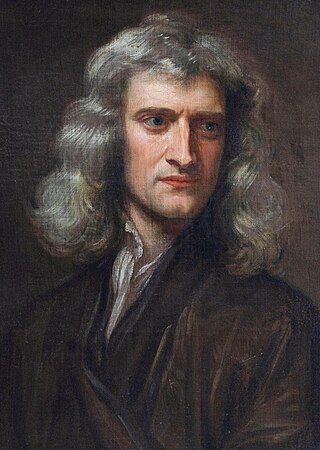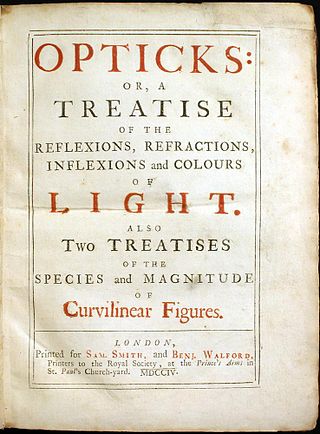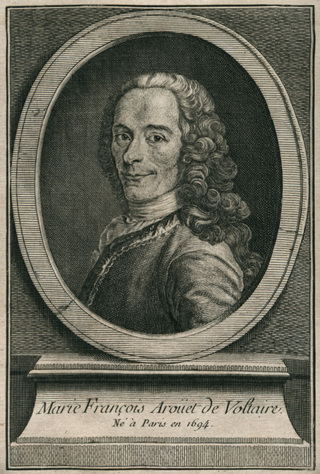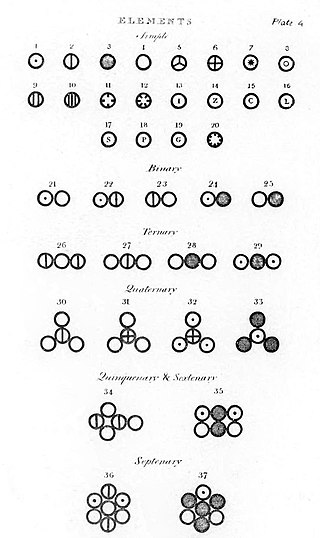Related Research Articles

Sir Isaac Newton was an English polymath active as a mathematician, physicist, astronomer, alchemist, theologian, and author who was described in his time as a natural philosopher. He was a key figure in the Scientific Revolution and the Enlightenment that followed. His pioneering book Philosophiæ Naturalis Principia Mathematica, first published in 1687, consolidated many previous results and established classical mechanics. Newton also made seminal contributions to optics, and shares credit with German mathematician Gottfried Wilhelm Leibniz for developing infinitesimal calculus, though he developed calculus years before Leibniz. He is considered one of the greatest and most influential scientists in history.

The Scientific Revolution was a series of events that marked the emergence of modern science during the early modern period, when developments in mathematics, physics, astronomy, biology and chemistry transformed the views of society about nature. The Scientific Revolution took place in Europe in the second half of the Renaissance period, with the 1543 Nicolaus Copernicus publication De revolutionibus orbium coelestium often cited as its beginning.

Robert Hooke FRS was an English polymath active as a scientist, natural philosopher and architect, who is credited to be one of the first two scientists to discover microorganisms in 1665 using a compound microscope that he built himself, the other scientist being Antonie van Leeuwenhoek in 1674. An impoverished scientific inquirer in young adulthood, he found wealth and esteem by performing over half of the architectural surveys after London's great fire of 1666. Hooke was also a member of the Royal Society and since 1662 was its curator of experiments. Hooke was also Professor of Geometry at Gresham College.

Robert Boyle was an Anglo-Irish natural philosopher, chemist, physicist, alchemist and inventor. Boyle is largely regarded today as the first modern chemist, and therefore one of the founders of modern chemistry, and one of the pioneers of modern experimental scientific method. He is best known for Boyle's law, which describes the inversely proportional relationship between the absolute pressure and volume of a gas, if the temperature is kept constant within a closed system. Among his works, The Sceptical Chymist is seen as a cornerstone book in the field of chemistry. He was a devout and pious Anglican and is noted for his writings in theology.

Rasmus Bartholin was a Danish physician and grammarian.

Isaac Barrow was an English Christian theologian and mathematician who is generally given credit for his early role in the development of infinitesimal calculus; in particular, for proof of the fundamental theorem of calculus. His work centered on the properties of the tangent; Barrow was the first to calculate the tangents of the kappa curve. He is also notable for being the inaugural holder of the prestigious Lucasian Professorship of Mathematics, a post later held by his student, Isaac Newton.

Étienne-Louis Malus was a French officer, engineer, physicist, and mathematician.

The following article is part of a biography of Sir Isaac Newton, the English mathematician and scientist, author of the Principia. It portrays the years after Newton's birth in 1642, his education, as well as his early scientific contributions, before the writing of his main work, the Principia Mathematica, in 1685.

Opticks: or, A Treatise of the Reflexions, Refractions, Inflexions and Colours of Light is a book by Isaac Newton that was published in English in 1704. The book analyzes the fundamental nature of light by means of the refraction of light with prisms and lenses, the diffraction of light by closely spaced sheets of glass, and the behaviour of color mixtures with spectral lights or pigment powders. Opticks was Newton's second major book on physical science and it is considered one of the three major works on optics during the Scientific Revolution. Newton's name did not appear on the title page of the first edition of Opticks.

Jean Picard was a French astronomer and priest born in La Flèche, where he studied at the Jesuit Collège Royal Henry-Le-Grand.

Nicolas Fatio de Duillier was a mathematician, natural philosopher, astronomer, inventor, and religious campaigner. Born in Basel, Switzerland, Fatio mostly grew up in the then-independent Republic of Geneva, of which he was a citizen, before spending much of his adult life in England and Holland. Fatio is known for his collaboration with Giovanni Domenico Cassini on the correct explanation of the astronomical phenomenon of zodiacal light, for inventing the "push" or "shadow" theory of gravitation, for his close association with both Christiaan Huygens and Isaac Newton, and for his role in the Leibniz–Newton calculus controversy. He also invented and developed the first method for fabricating jewel bearings for mechanical watches and clocks.

The history of chemistry represents a time span from ancient history to the present. By 1000 BC, civilizations used technologies that would eventually form the basis of the various branches of chemistry. Examples include the discovery of fire, extracting metals from ores, making pottery and glazes, fermenting beer and wine, extracting chemicals from plants for medicine and perfume, rendering fat into soap, making glass, and making alloys like bronze.
According to ancient and medieval science, aether, also known as the fifth element or quintessence, is the material that fills the region of the universe beyond the terrestrial sphere. The concept of aether was used in several theories to explain several natural phenomena, such as the propagation of light and gravity. In the late 19th century, physicists postulated that aether permeated space, providing a medium through which light could travel in a vacuum, but evidence for the presence of such a medium was not found in the Michelson–Morley experiment, and this result has been interpreted to mean that no luminiferous aether exists.

The Newton disc, also known as the disappearing colour disc, is a well-known physics experiment with a rotating disc with segments in different colours appearing as white when it's spun rapidly about its axis.

Elements of the Philosophy of Newton is a book written by the philosopher Voltaire and co-authored by mathematician and physicist Émilie du Châtelet in 1738 that helped to popularize the theories and thought of Isaac Newton. This book, coupled with Letters on the English, written in 1733, demonstrated that Voltaire had moved beyond the simple poetry and plays he had written previously.
George Starkey (1628–1665) was a Colonial American alchemist, medical practitioner, and writer of numerous commentaries and chemical treatises that were widely circulated in Western Europe and influenced prominent men of science, including Robert Boyle and Isaac Newton. After relocating from New England to London, England, in 1650, Starkey began writing under the pseudonym Eirenaeus Philalethes. Starkey remained in England and continued his career in medicine and alchemy until his death in the Great Plague of London in 1665.

This timeline of chemistry lists important works, discoveries, ideas, inventions, and experiments that significantly changed humanity's understanding of the modern science known as chemistry, defined as the scientific study of the composition of matter and of its interactions.
Events from the year 1669 in England.

Honoré Fabri was a French Jesuit theologian, also known as Coningius. He was a mathematician, physicist and controversialist.

Treatise on Light: In Which Are Explained the Causes of That Which Occurs in Reflection & Refraction is a book written by Dutch polymath Christiaan Huygens that was published in French in 1690. The book describes Huygens's conception of the nature of light propagation which makes it possible to explain the laws of geometrical optics shown in Descartes's Dioptrique, which Huygens aimed to replace.
References
- ↑ Hall, A. Rupert (1996). Isaac Newton: Adventurer in Thought. Cambridge University Press. p. 67.
- ↑ Philosophical Transactions of the Royal Society 4: pp. 963–965.
- ↑ Emsley, John (2001). Nature's Building Blocks: an A–Z guide to the elements. Oxford University Press. ISBN 978-0-19-850341-5.
- ↑ Weeks, Mary Elvira (1932). "The discovery of the elements. II. Elements known to the alchemists". Journal of Chemical Education. 9 (1): 11. Bibcode:1932JChEd...9...11W. doi:10.1021/ed009p11.
- ↑ De solido intra solidum naturaliter contento dissertationis prodromus.
- ↑ Palmer, Alan; Palmer, Veronica (1992). The Chronology of British History. London: Century Ltd. pp. 190–191. ISBN 0-7126-5616-2.
- ↑ Bartholin, Erasmus (1669). Experimenta crystalli islandici disdiaclastici quibus mira & insolita refractio detegitur. Copenhagen: Daniel Paulli. English translation: Experiments with the double refracting Iceland crystal which led to the discovery of a marvelous and strange refraction tr. by Werner Brandt. Westtown, Pa., 1959.